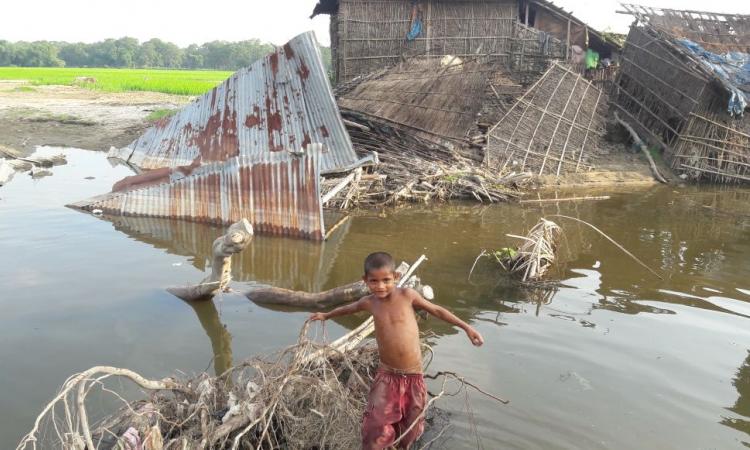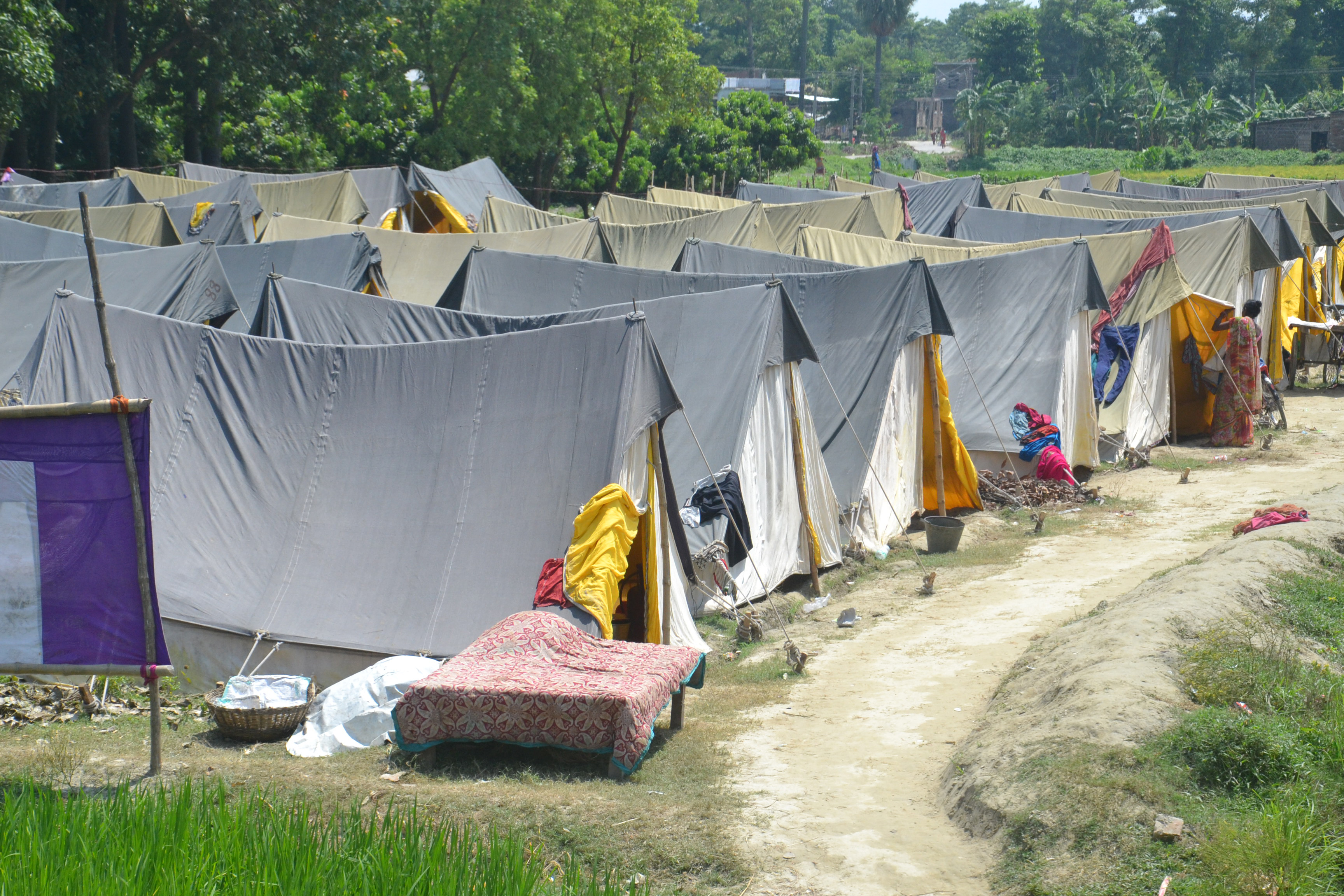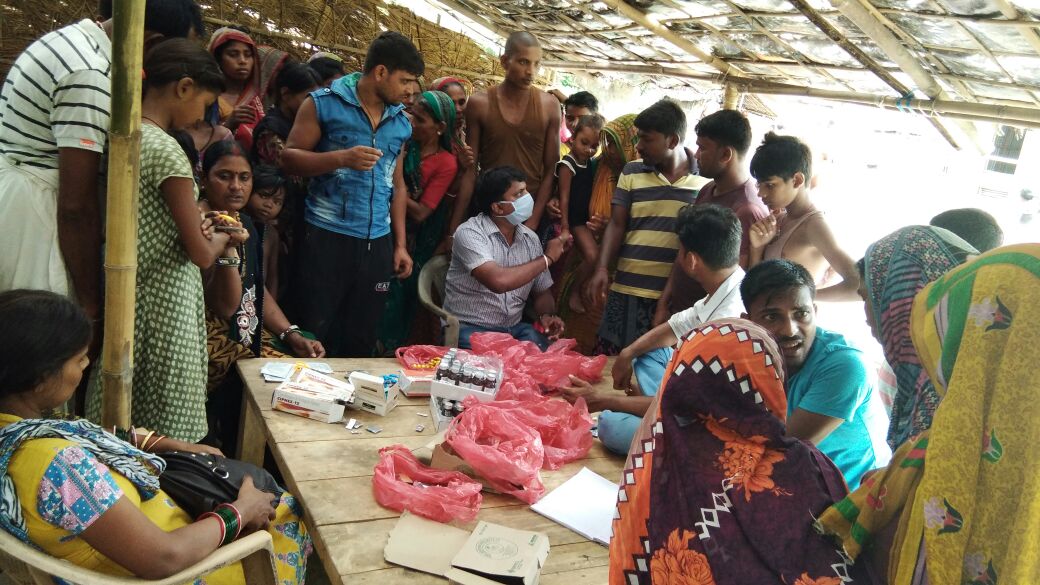
In August this year, the states of Bihar and Assam witnessed the worst flooding in a long time. The water level is slowly receding now but it is not giving much respite to people as the aftermath of the devastating floods has brought upon miseries of its own.
Crores of people have been affected in 21 of its 38 districts and 514 people have lost their lives. According to the state government, the economic impact of the floods can be assessed only after the situation eases. However, its trail of destruction is evident.

Chief medical officer of Gopalganj district, Dr M.P. Sharma says the threat of water-related infection has increased in all the 174 villages of the district. He says the government has undertaken preventive measures to check the outbreak of diseases.
Pratay Amrit, the principal secretary of Bihar State Disaster Management Authority, informs that the administration is supplying water purification tablets and mosquito repellents and getting bleaching powder sprayed in the affected areas. Besides, leaves of doctors and paramedics have been cancelled to ensure health care in the flood-hit areas.
According to the World Health Organization, floods can increase the risk of waterborne diseases (typhoid, cholera, leptospirosis, hepatitis A etc) and mosquito-borne diseases (malaria, dengue, yellow fever etc). Reports of deaths from diarrhoea have already started coming in. In Araria, one of the worst-hit districts by floods, about 500 people including children had to be hospitalised after they exhibited symptoms of severe diarrhoea. Araria's district magistrate Himanshu Sharma says health officers have been instructed to be available round-the-clock to attend to any issue.
Open defecation programme affected
The deluge has also dealt a body blow to the government's plan of eradicating open defecation. Nandu Ram, a resident of Mushari block in Muzaffarpur district, says he had taken a loan of Rs 10,000 to get a toilet built for Rs 20,000 but the raging water left it damaged. Though he is worried about all the losses, particularly worrying, according to him is the fact that his family would have to defecate in the open.
Others like Vikas Kumar of Kamarthu village in Muzaffarpur district had their entire dwelling washed away in the flood. He says he had to rush to his village from New Delhi to come to the aid of his wife and children as the water level started rising, but he felt helpless as his hut got swept away.
Livelihoods affected, migration to increase
People in the flood-hit areas have to rebuild not only their toilets and houses but also their livelihood. Land, the main source of income for small and marginal farmers, will not be fit for agricultural activities till October-end. The floods have already destroyed standing crops. Then, there's the challenge of arranging fodder for the livestock.
For landless farmers, migration is the only option left. But to go about this too, some have to resort to accruing debt by borrowing from private moneylenders. Waiting for a Delhi-bound train at Patna railway station, a farm labourer hailing from Kamarthu village in Muzaffarpur district, Mukesh (who gave only his first name), says he had to borrow some money from a lender on interest so that he could move to Delhi for a job.
As the number of people taking shelter in relief camps reduces and they begin to return to their villages, the challenges of rehabilitation stare them in the face. Undependable electricity supply, for one, continues to slow down their efforts.
Assam tries to recover
In Assam, where the state government pegged the damage at Rs 3,000 crore in July-end, about 150 villages and more than 6,500 hectares of cropland are still under water. Three waves of flood this year subjected the state to its worst deluge in more than a decade and claimed 159 lives.

"Every time we thought it was now safe, another spell of rain would arrive and our village would be flooded again," says Abdur (who gave only his first name), a farmer from Karimganj district. He owns two bighas of land on which he grows rice. He says his land has been under water for months and parts of it are still submerged. He says he needs to start growing crops to make some money and rebuild his house.
Farmers of the region blame the Karimganj water resources division for not repairing Longai river's embankment. The overflowing water has been submerging cropland for the last three years. In the state, more than 6,500 hectares of cropland was under water even on Thursday. Consequently, the cost of vegetables stands inflated in the state.
Epidemics scare on the rise
Like Bihar, in Assam, too, there is a fear of waterborne diseases. In May this year, after the first wave of flood, about 50 people in Karimganj district alone contracted diarrhoea and viral fever. The authorities collected water samples from some villages and the laboratory tests confirmed the presence of E. coli bacteria which was responsible for it.

Karimganj deputy commissioner Pradip Kumar Talukdar says they have been deploying medical teams to visit flood-hit areas and take stock of the situation.
With the risk of waterborne infections at an all-time high, pregnant women and new mothers are particularly vulnerable. Mariyam Khatun, an accredited social health activist based in Barpeta district, says the floods have made the life of pregnant women difficult. The primary health care centre, too is far for many people.
The wife of Nakul Bora, a resident of Bogolijan village in Lakhimpur district, is six months pregnant. Her husband recalls how they had to spend a month and 10 days in a roadside shelter after their house was washed away. He says he could never forget the ordeal of having to live in the shelter in such a condition.
This year's deluge in Assam has destroyed many roads and bridges which indirectly hampers the rehabilitation effort as a battered populace tries to limp back to normalcy.
(With inputs from Atyasha Singh, Saketh Ambastha, Ganesh Prasad, Swapnaneel, Gaurav Das and Saurabh Sharma. All reporters are members of 101Reporters, a pan-India network of grassroots reporters.)
Massive floods are becoming an annual phenomenon, thanks to climate change. No efforts are being made to prevent them or contain the damage. Here, we take a look at how to prevent massive floods in the future.